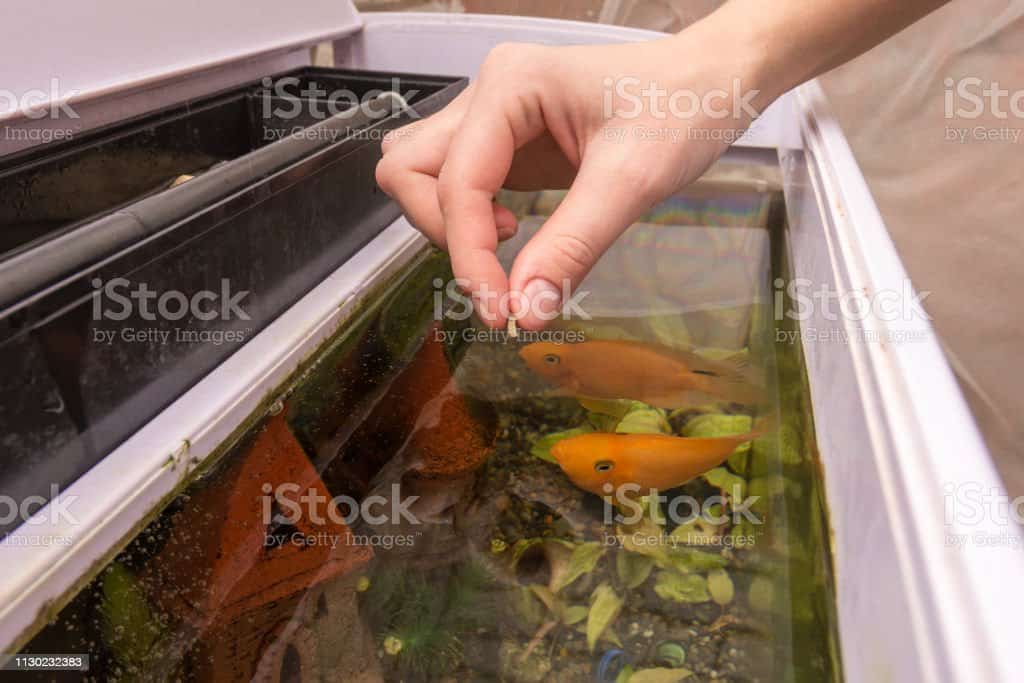
Many tropical fish can go days without food, but when they do need to eat it is essential to know when and how often.
When it comes to feeding your fish, the frequency of feed depends on their species, size, and activity level. Smaller active fish may need multiple meals a day for optimal health.
Contents
Feeding Schedules
By providing your tropical fish with the appropriate diet and feeding schedule, they will thrive, keep their vibrant color, and live long, healthy lives. Some breeds of tropical fish do better on a once-per-day feeding schedule while others require several more times throughout the day for optimal nutrition.
Herbivore fish such as silver dollars, mollies and farlowellas require more frequent feedings than carnivores since their stomachs cannot hold as much food at once. They should be given several smaller meals throughout the day or provided with fresh greens to nibble on.
Overfeeding is not recommended, as uneaten foods can accumulate at the bottom of a tank, decreasing water quality and clogging filters. Furthermore, some uneaten foods may break down into toxins that could harm your fish.
As a general guideline, give your tropical fish no more food than they will consume within five minutes. If they don’t eat it within this period of time, you may have overfed them and need to reduce the amount of food given them.
Feeding Time
Feeding time is critical for your fish’s wellbeing, as overfeeding could affect their condition negatively. Overfeeding should never be done as uneaten food will collect at the bottom of the tank and clog your filter, plus it causes contaminated water which not only smells unpleasant to your fish but could make them more vulnerable to disease and parasites as well.
Generally, tropical fish can go for several days without feeding. However, this depends on a variety of factors like the fish’s size and age.
Herbivore (plant-eating) fish are particularly vulnerable to going without food due to their smaller stomachs than carnivores and thus must eat more frequently.
As a general guideline, feed your tropical fish once or twice daily. This should fit within your lifestyle and ensure they receive enough food to grow and flourish.
Feeding Frequency
Tropical fish require regular feedings to stay healthy and content. The frequency of these feedings varies based on the species of fish in your tank, as well as their nutritional requirements.
For smaller species such as guppies, mollies and bettas, it’s usually best to feed them once a day. Their small stomachs can only handle a few pellets within a minute so it’s best to feed them regularly.
However, they can become easily overfed; therefore, it’s essential to monitor their behavior to determine when they’re hungry and have eaten all of your provided food.
Overfeeding your fish can cause several issues, such as bloating and chemical buildup in the water. It also increases nitrate levels in the water and leads to clogged filters. Furthermore, overfeeding puts stress on your fish which may result in health conditions like fatty liver disease.
Feeding Materials
All tropical fish species require a diet rich in protein, carbohydrates, vitamins and minerals to thrive. However, some are more sensitive to certain nutrients than others.
Therefore, you must understand which foods your tropical fish require for optimal nutrition. Furthermore, take into account the water quality, temperature and activity level in your pond.
Feedstuffs come in many different formats, including dried and fresh, prepared flake foods or pellets. Generally speaking, these contain substantial amounts of vegetable matter with added vitamins and minerals.
Live foods such as bloodworm, daphnia and brine shrimp are popular supplemental feeds for tropical fish. These high protein sources can be fed two or three times a week.
When using dried supplementary feeds, make sure they are fresh to prevent deterioration. Store them in clean containers such as old metal drums or wooden crates and secure with small-mesh metal netting to keep rodents out of your storage area.




